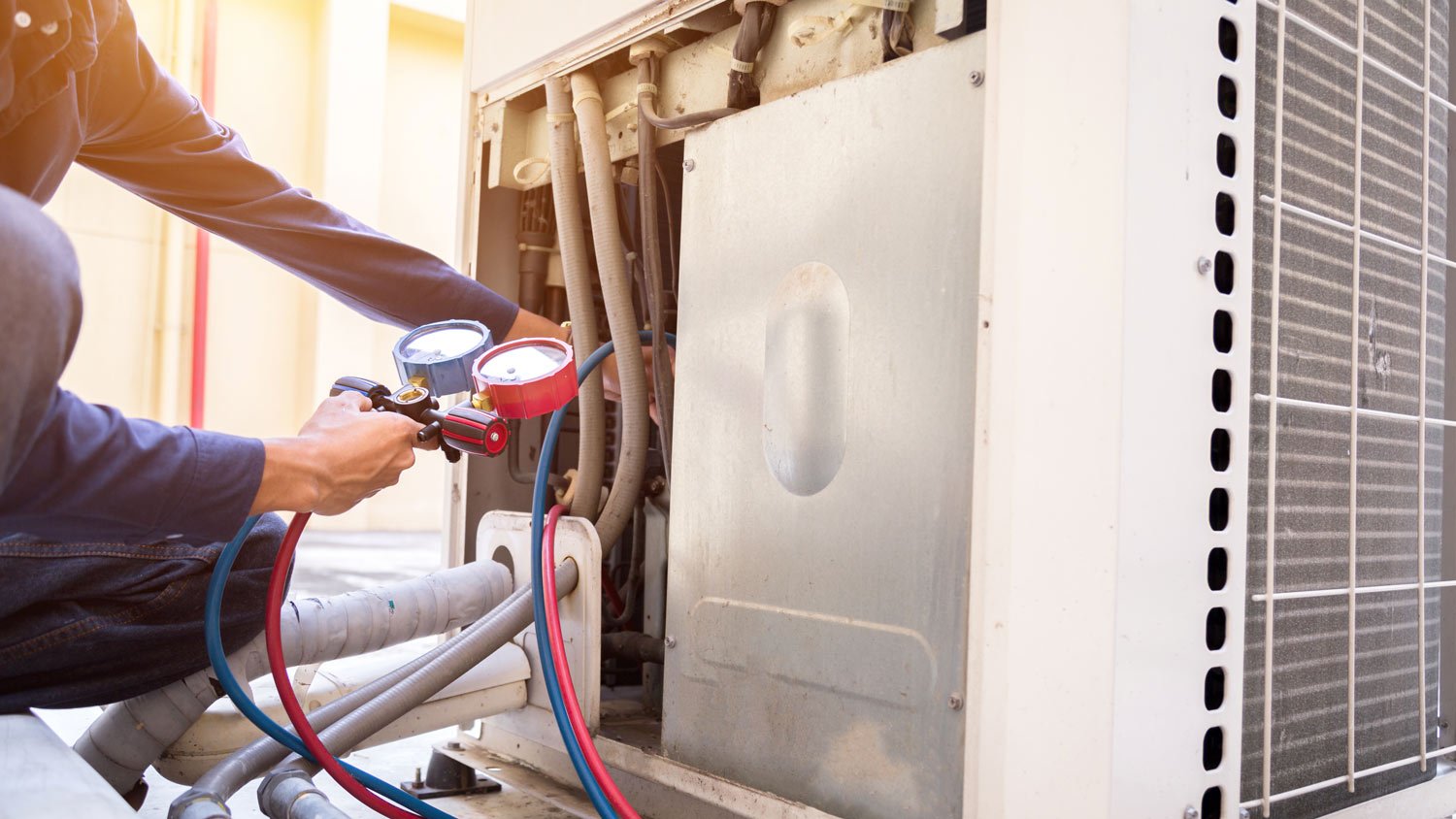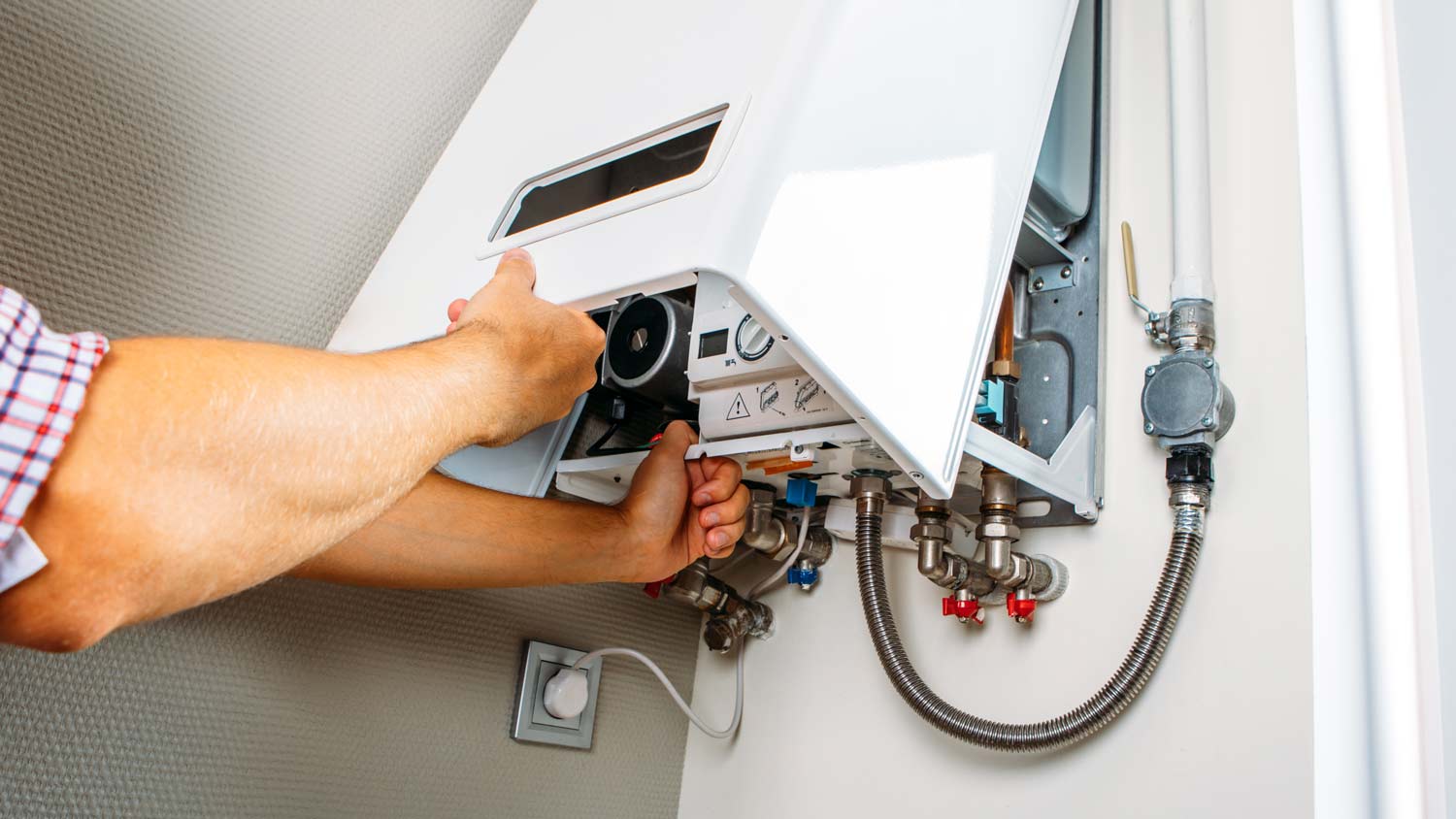
What you’ll pay in Columbus, OH, for furnace repairs depends on many factors. Here’s a breakdown of what can go wrong and the cost to fix those issues.
Catch up on your coil knowledge


The evaporator coil is a triangular layer of pipes and fins made from a heat-conductive metal like copper or aluminum.
The coil is housed in the indoor unit of a whole-house air conditioner, where refrigerant passes through its pipes and absorbs heat from the indoor air.
Evaporator coils are also found in refrigerators, window AC units, heat pumps, cars, and more.
Evaporator coils can become covered with dirt over time, which impedes performance, or may run low on refrigerant due to leaks, so maintenance is important.
If you’re curious about the inner workings of your HVAC system, learning what an evaporator coil is a great place to start.
We’re here to explain exactly what an evaporator coil does, how it relates to other parts of the air conditioner, and if you need to worry about any particular evaporator coil maintenance. If you need to repair or replace your evaporator coil, consider hiring an AC repair professional near you.
The evaporator coil is the part of your HVAC system that performs the essential job of removing heat from the air via refrigerant and lines of copper tubing. It’s made from layers of highly conductive metal pipes, usually copper or aluminum. Contrary to its name, these pipes don’t form a coil but rather a series of many U-turns that creates a wall of piping for maximum air exposure.
This type of AC coil typically stays hidden inside the indoor unit of an air conditioning system. When your air conditioner cover or case is open, you can identify the evaporator coil as a triangular scaffolding of metal pipes weaving back and forth to create a tight network, and topped with a mesh of thin “fins”. Those fins make it easier for the evaporator coil to absorb heat from the air.
Wondering about the role evaporator coils play in the process of heating and cooling your home? Check out these steps:
Very cold refrigerant pumps through the evaporator coil while warm air passes over the evaporator coil’s pipes.
As you may remember from science class, heat always tries to seek an equilibrium, so heat happily passes from the air to the conductive metal of the evaporator coil and then to the frigid refrigerant waiting inside.
The air inside the air conditioner grows colder as heat leaves it.
Then, it then passes through the blower system and spreads through your home using air ducts. Presto, there’s a wave of cool air coming from your vents!
Meanwhile, the refrigerant in the evaporator coil absorbs so much heat it evaporates into a gas and moves along to release its heat elsewhere.
New refrigerant enters the evaporator coil as the cycle continues until the inside temperature reaches the desired level, and your thermostat tells the air conditioner to stop.

Every air conditioner that uses refrigerant has an evaporator coil, including window units and cooling mechanisms in your refrigerator. Evaporator coils can come in various shapes and sizes, but their purpose is always to let refrigerant absorb warmth from nearby air and take it away.
However, not all air conditioners use refrigerants. For example, evaporative air conditioners, also known as swamp coolers, use evaporating water or ice to make the nearby air feel cooler.
Evaporator coil efficiency depends on the size, shape, metals used, quality and level of refrigerant, and other important problems. The coil’s efficiency is directly linked to the efficiency of the overall AC unit, so it doesn’t have a separate rating of its own, but the AC’s SEER2 rating can show the efficiency of the evaporator coil.
SEER2 is an upgrade compared to the older SEER numbers and provides a number rating: The higher the number, the more efficient the system. North American systems are required to have a SEER2 of at least 13.4, with higher requirements in some climates, but SEER2 ratings range to 30 and many new AC systems can reach between 18 and 20. When replacing evaporator coils, it’s important to match the refrigerant ratings and SEER2 numbers to the current AC system.
The condenser or condenser coil is closely related to the evaporator coil and is often made of similar materials. It has a similar structure, but it works in reverse. Condenser coils are located in the outdoor AC unit, and they send the heated air out of your home.
Condenser coils are larger and more expensive than evaporator coils to replace, costing $900 to $1,800. Plus, since they’re exposed to the outdoor elements, these types of coils require more frequent maintenance and cleaning.
While evaporator coils and condensers are very similar, the AC compressor is a different component. When the refrigerant flows from the evaporator coil to the outdoor condenser, it’s in a gas form but it’s relatively cool and won’t release the heat very easily. The compressor’s job is to squeeze the refrigerant gas in a high-pressure environment. The compressed gas is much hotter and much more willing to release that heat into the outdoor air as it passes through the condenser.
Basic air conditioner maintenance may seem simple, but these systems can carry powerful electrical charges, some of which don’t immediately dissipate when you turn the power off. Rely on a local AC repair professional for more advanced maintenance.
Remove dust: As the evaporator coil pipes and fins become coated with dust, they struggle to absorb heat as quickly and the overall performance of the air conditioner decreases. Taking precautions, you can vacuum the evaporator coil with a soft brush attachment to clean it.
Clear away oil and grease: If the coil is particularly dirty, you can use water and a mild detergent to clean it. Remember to be gentle and avoid leaving any lingering moisture in the air conditioner, which can create a breeding ground for mildew and may also affect performance.
Remove debris: While you can use a vacuum to remove debris from your evaporator coils, you can also remove pieces using a can on compressed air.
Since the evaporator coil is such an important part of your air conditioning system, when something goes wrong with it, it tends to affect the entire system. That means that any serious issue with cooling in your home could connect back to the evaporator coil, and similar problems can come from evaporator and condenser issues. However, some problems are more indicative of a malfunctioning coil, including:
Warm air coming from your AC: This is a sign that the AC indoor unit simply isn’t absorbing heat from the air, even though other parts are working. The evaporator coil may have stopped working entirely, or is experiencing severe issues. Sometimes this means the evaporator coil is frozen, which is related to poor refrigerant balance, defrosting issues, or similar problems.
AC runs for a long time: If your AC system is running for much longer and struggles to cool the air, it’s a common sign it's running low on refrigerant. It’s common for very small amounts of refrigerant to leak out over time, but if the evaporator coil is damaged or worn down, it could let lots of refrigerant escape.
AC keeps stopping and starting again: An AC unit that stops and starts randomly is a sign of a problem with refrigerant levels or a dirty evaporator coil. It’s a good sign that you need a full inspection to narrow down the problem.
AC doesn’t turn on at all: If you can’t hear your air conditioner running, it could indicate a power issue or problem with the evaporator coil, causing the system to shut down and refuse to restart. If you hear a low hum or similar noise instead of the usual sound of your AC, that can mean the evaporator coil can’t do its job.
From average costs to expert advice, get all the answers you need to get your job done.

What you’ll pay in Columbus, OH, for furnace repairs depends on many factors. Here’s a breakdown of what can go wrong and the cost to fix those issues.

Discover the primary whole-house air filtration system cost factors when installing one in your home to help remove airborne contaminants and allergens.

If your furnace is malfunctioning, it could be a faulty control board. Find out what a furnace control board replacement costs for parts, labor, and more.

Forced-air systems provide a reliable source of warmth for your home, but what is forced-air heating, exactly? Let’s break it down.

If you need to repair a gas boiler or radiator heating system, you should first talk to a pro. Here are the top radiator repair questions you should ask.

Is your furnace not blowing hot air? Find out 13 common culprits behind a cold furnace, plus tips for how to get the warm air pumping again.